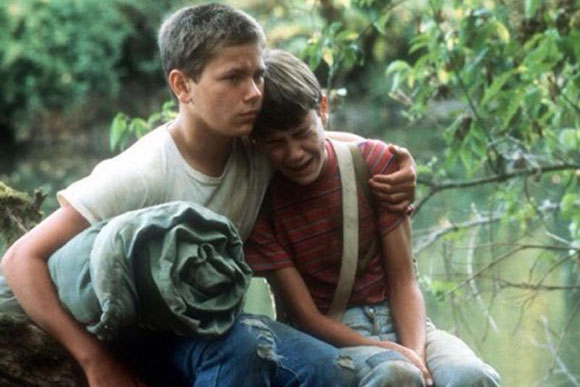When audiences first watched Gremlins in 1984, they expected a mischievous horror-comedy about strange little monsters running amok at Christmastime. What they may not have expected was one of the darkest, most unexpectedly tragic monologues in a mainstream holiday-themed film: the infamous “Santa speech” delivered by Phoebe Cates.
The monologue, delivered deadpan by Cates’ character Kate Beringer, is an abrupt tonal shift in a film already known for its genre-bending. In the scene, Kate explains why she hates Christmas: “The worst thing that ever happened to me was on Christmas. Oh, God. It was so horrible…” She recounts how her father died trying to surprise the family by climbing down the chimney dressed as Santa Claus, breaking his neck and remaining undiscovered for days until the smell from the fireplace led to the grisly discovery. “And that’s how I found out there was no Santa Claus.”
The scene is legendary not just for its shocking content, but for the controversy it stirred behind the scenes. From the start, the Santa speech was a point of contention. Studio executives feared it was too jarring — unsure if it was intended to be comedic, tragic, or both. The tonal whiplash of the scene, sandwiched between zany gremlin mayhem and holiday cheer, left them concerned that audiences wouldn’t know how to react. Some lobbied hard to have it cut entirely.
Phoebe Cates’ tragic Santa Claus story almost got cut

But director Joe Dante saw the moment as central to the film’s identity. For Dante, the speech wasn’t a mistake — it was a mission statement. The blend of absurdity, horror, and unexpected emotional heft perfectly encapsulated what Gremlins was aiming for: a subversive dark comedy that poked fun at family films and Christmas tropes while still delivering genuine scares.
“It’s the whole movie in one scene,” Dante reportedly argued. He wasn’t alone in believing in the moment’s power. Screenwriter Chris Columbus had included the speech in his original draft, using it to reinforce the darker edges of small-town Americana that the film so gleefully skewers.
Even executive producer Steven Spielberg — no stranger to blending heartfelt storytelling with blockbuster spectacle — wasn’t initially convinced. Though he personally disliked the scene, he ultimately respected Dante’s vision and allowed it to stay. As he put it, Gremlins was Dante’s movie, not his.
The risk paid off. While some critics found the scene disturbing or tonally inconsistent, many others embraced it as a perfect embodiment of the film’s twisted humour and macabre charm. Over the years, it has become one of the most talked-about moments in Gremlins, endlessly quoted and parodied. It’s part of what gives the film its lasting impact — a strange cocktail of chaos, nostalgia, and trauma wrapped in Christmas lights.
Gremlins itself was a cultural phenomenon. Released in the U.S. on June 8, 1984, it was both a box office success and a merchandising juggernaut. But it also sparked controversy, with parents and critics balking at the film’s violent scenes and dark themes — all of which played out under a PG rating. The backlash helped spur the creation of the now-familiar PG-13 rating just months later.
A controversial Christmas movie

Set in a snow-covered small town, Gremlins centres on Billy Peltzer (Zach Galligan), who receives a mysterious creature called a Mogwai named Gizmo. When Gizmo is inadvertently exposed to water and fed after midnight — two of the strict rules that come with his care — he spawns a horde of mischievous, malevolent gremlins. Chaos ensues. The film walks a careful line between comedy, horror, and satire, spoofing everything from holiday movies to classic monster flicks.
Yet among all the gremlin gags, exploding microwaves, and slapstick carnage, it’s Phoebe Cates’ haunting monologue that lingers. In a film that gleefully shreds the boundaries between genres, the Santa speech stands out not just because it’s unexpected, but because it dares to be sincere. It sneaks a piece of emotional devastation into the middle of a creature feature and dares the audience to laugh, cringe, and maybe even tear up all at once.
Four decades later, the speech remains a defining moment — a surreal blend of pathos and parody. It’s proof that sometimes, the strangest creative risks are the ones that endure the longest. And to think, it almost never made it into the film at all.



















Comments